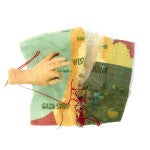“Negotiation is like jazz. It’s improvisation on a theme–you know where you want to go, but you don’t know how to get there. It’s not linear.”
So said Ambassador Richard Holbrooke at Harvard Law School recently, speaking on the art of negotiation. “I say ‘art’ intentionally,” he added, “because it’s not a science and never will be.”
The following stories prove that if negotiation is an art, it’s one that can be taught, and that its techniques are constantly being refined. A quarter-century after HLS Professor Roger Fisher ’48 and William Ury published “Getting to Yes,” Harvard Law School’s Program on Negotiation, chaired by Professor Robert Mnookin ’68, is elevating the art form, giving it more and more resolution with new pixels of information.
Where once it was thought that emotion should be removed as much as possible from conflict resolution, today’s negotiation students are striving to harness emotion and channel it in constructive ways.
Online, a new “e-Parliament” provides legislators worldwide with a forum for sharpening negotiation strategies on critical global issues.
Behind closed doors, in a law school classroom, some of the biggest deals ever negotiated are being dissected and critiqued by students–face-to-face with the deal makers who negotiated them.
Abroad, Harvard-trained negotiators on both sides of the Israeli-Palestinian conflict are learning that before there can be peace, there must be a process. They are coming to understand that though they know where they want to go, they don’t know how to get there–and that the journey, like a ride through the streets of Jerusalem, will not be linear.

Beyond ‘Yes’
Harvard’s Program on Negotiation is refining the art and sharing it with the world.

Road Maps and Roadblocks
Harvard-trained negotiators are working hard on both sides of the Israeli-Palestinian dispute.

Leverage
Some of the biggest deal makers put the world on hold while they teach in a class led by Professor Guhan Subramanian ’98.

Show Me the Money!
Peter Carfagna ’79 has negotiated for Tiger Woods and other marquee athletes. As sports law has become increasingly diversified, so has he.
